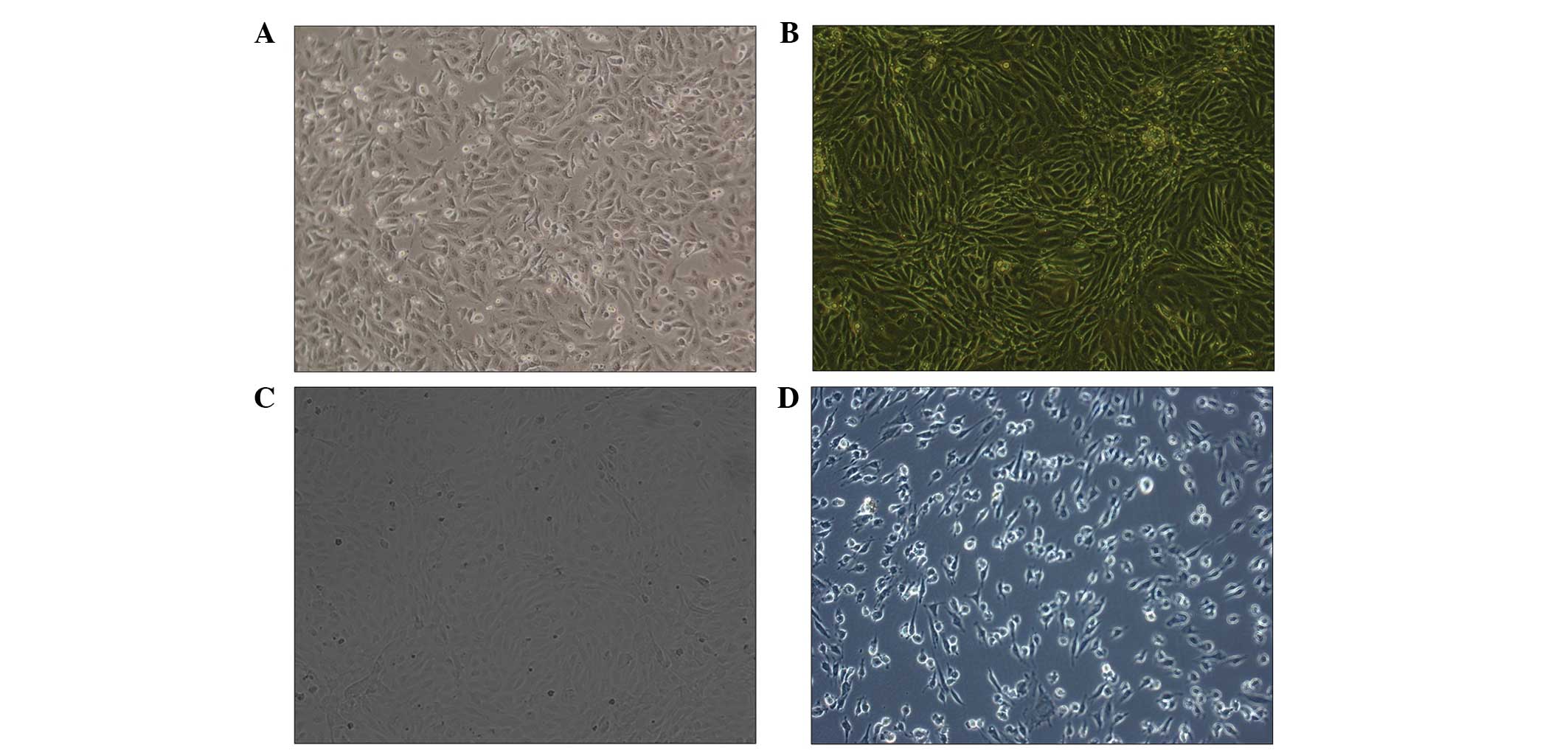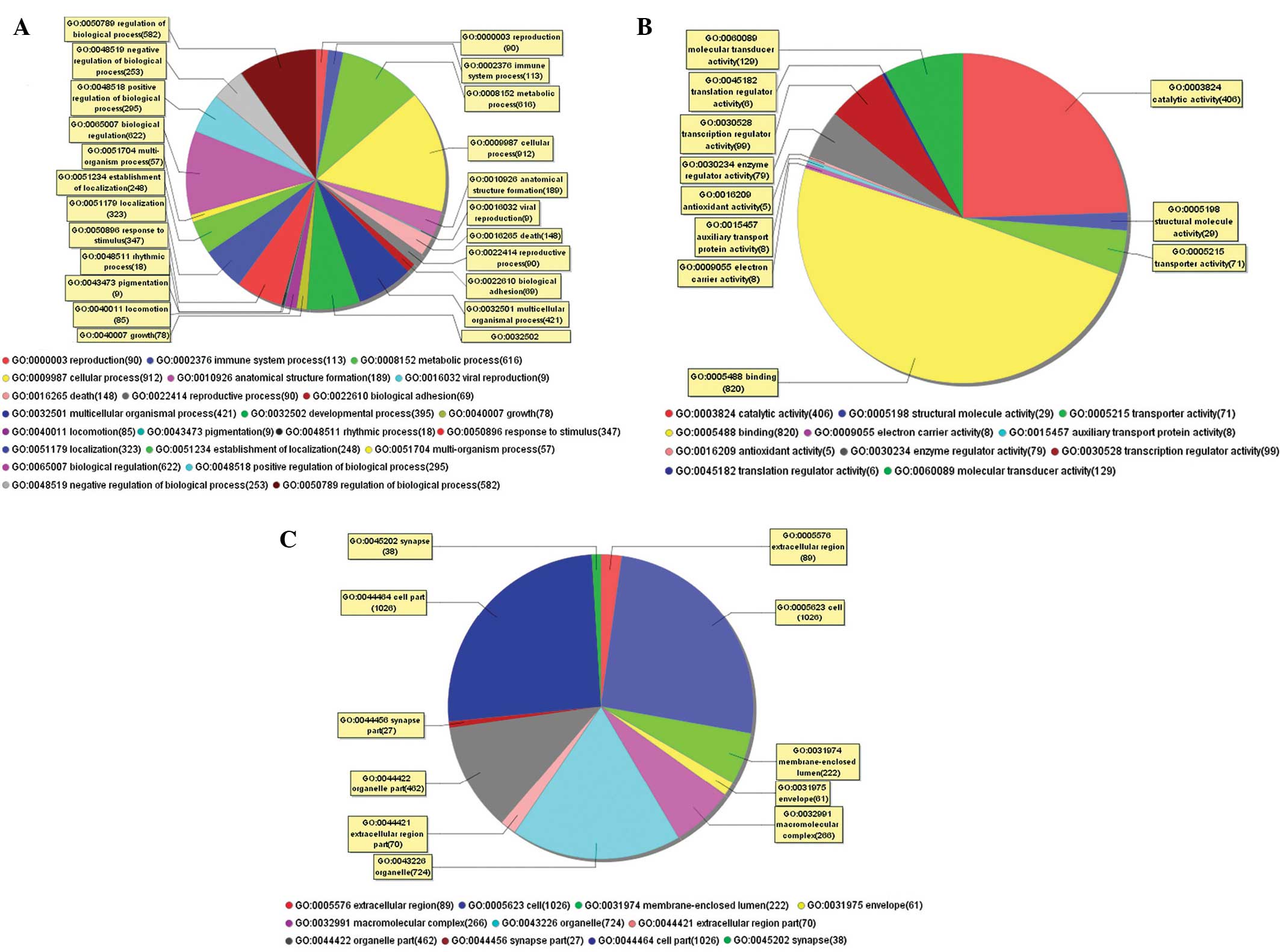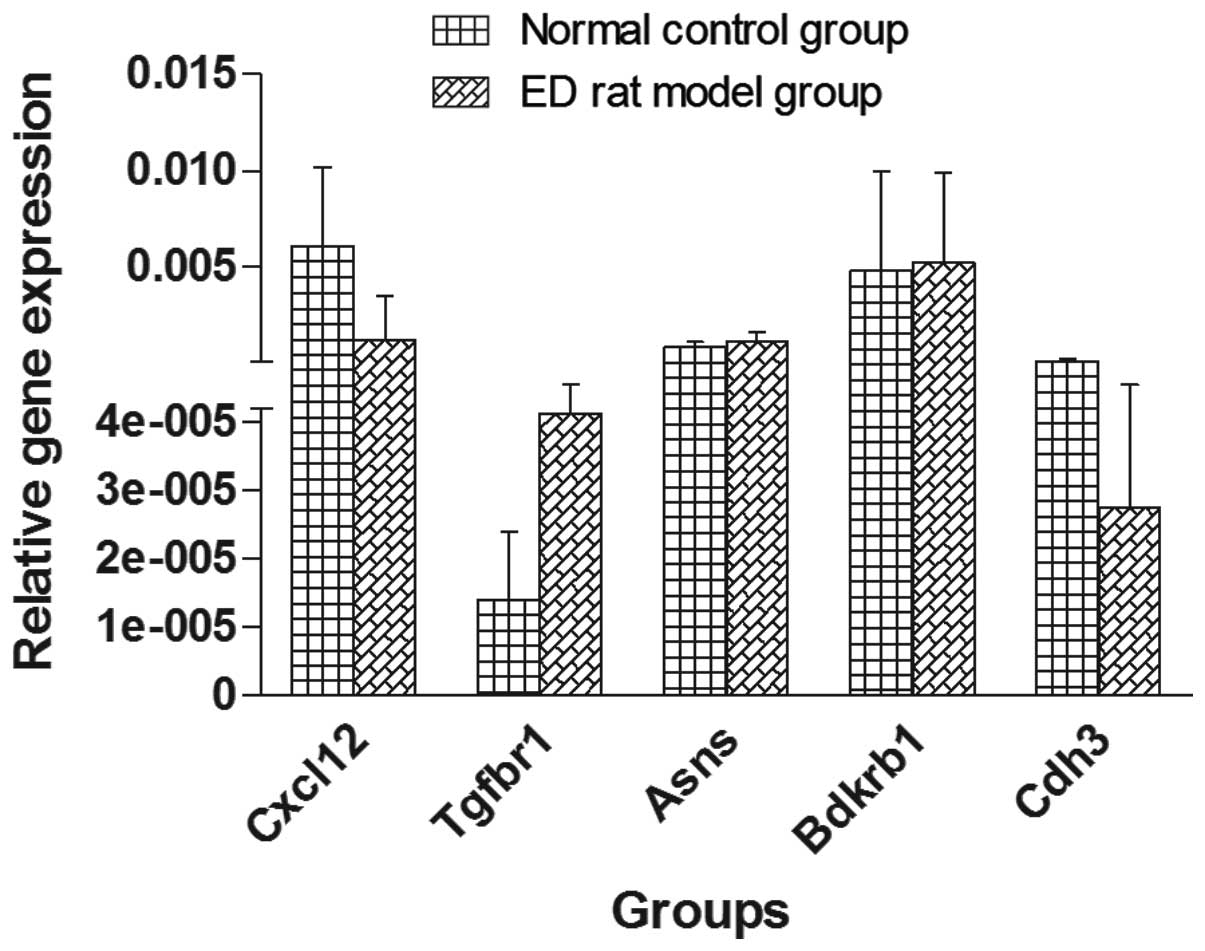|
1
|
Barrett-Connor E: Heart disease risk
factors predict erectile dysfunction 25 years later (the Rancho
Bernardo Study). Am J Cardiol. 96:3M–7M. 2005. View Article : Google Scholar
|
|
2
|
Mulhall J, Teloken P, Brock G and Kim E:
Obesity, dyslipidemias and erectile dysfunction: a report of a
subcommittee of the sexual medicine society of North America. J Sex
Med. 3:778–786. 2006. View Article : Google Scholar : PubMed/NCBI
|
|
3
|
Zhang Q, Radisavljevic ZM, Siroky MB and
Azadzoi KM: Dietary antioxidants improve arteriogenic erectile
dysfunction. Int J Androl. 34:225–235. 2011. View Article : Google Scholar
|
|
4
|
Costa C and Virag R: The
endothelial-erectile dysfunction connection: an essential update. J
Sex Med. 6:2390–2404. 2009. View Article : Google Scholar : PubMed/NCBI
|
|
5
|
Musicki B, Liu T, Lagoda GA, et al:
Hypercholesterolemia induced erectile dysfunction: endothelial
nitric oxide synthase (eNOS) uncoupling in the mouse penis by NAD
(P)H oxidase. J Sex Med. 7:3023–3032. 2010. View Article : Google Scholar : PubMed/NCBI
|
|
6
|
Morano S, Gatti A, Mandosi E, et al:
Circulating monocyte oxidative activity is increased in patients
with type 2 diabetes and erectile dysfunction. J Urol. 177:655–659.
2007. View Article : Google Scholar : PubMed/NCBI
|
|
7
|
Azadzoi KM, Golabek T, Radisavljevic ZM,
Yalla SV and Siroky MB: Oxidative stress and neurodegeneration in
penile ischaemia. BJU Int. 105:404–410. 2010. View Article : Google Scholar
|
|
8
|
Sullivan CJ, Teal TH, Luttrell IP, Tran
KB, Peters MA and Wessells H: Microarray analysis reveals novel
gene expression changes associated with erectile dysfunction in
diabetic rats. Physiol Genomics. 23:192–205. 2005. View Article : Google Scholar : PubMed/NCBI
|
|
9
|
Tusher VG, Tibshirani R and Chu G:
Significance analysis of microarrays applied to the ionizing
radiation response. Proc Natl Acad Sci USA. 98:5116–5121. 2001.
View Article : Google Scholar : PubMed/NCBI
|
|
10
|
Agresti A: A survey of exact inference for
contingency tables. Stat Sci. 7:131–153. 1992. View Article : Google Scholar
|
|
11
|
Storey JD, Taylor JE and Siegmund D:
Strong control, conservative point estimation and simultaneous
conservative consistency of false discovery rates: a unified
approach. J R Stat Soc Series B. 66:187–205. 2004. View Article : Google Scholar
|
|
12
|
Nakaya A, Katayama T, Itoh M, et al: KEGG
OC: a large-scale automatic construction of taxonomy-based ortholog
clusters. Nucleic Acids Res. 41:D353–D357. 2013. View Article : Google Scholar :
|
|
13
|
Huang DW, Sherman BT and Lempicki RA:
Systematic and integrative analysis of large gene lists using DAVID
Bioinformatics Resources. Nature Protoc. 4:44–57. 2009. View Article : Google Scholar
|
|
14
|
Abe Y, Hotta Y, Okumura K, Kataoka T,
Maeda Y and Kimura K: Temporal changes in erectile function and
endothelium-dependent relaxing response of corpus cavernosal smooth
muscle after ischemia by ligation of bilateral internal iliac
arteries in the rabbit. J Pharmacol Sci. 120:250–253. 2012.
View Article : Google Scholar : PubMed/NCBI
|
|
15
|
Lee MC, El-Sakka AI, Graziottin TM, Ho HC,
Lin CS and Lue TF: The effect of vascular endothelial growth factor
on a rat model of traumatic arteriogenic erectile dysfunction. J
Urol. 167:761–767. 2002. View Article : Google Scholar : PubMed/NCBI
|
|
16
|
Albersen M, Fandel TM, Zhang H, et al:
Pentoxifylline promotes recovery of erectile function in a rat
model of postprostatectomy erectile dysfunction. Eur Urol.
59:286–296. 2011. View Article : Google Scholar :
|
|
17
|
Wang J, Wang Q, Liu B, Li D, Yuan Z and
Zhang H: A Chinese herbal formula, Shuganyiyang capsule, improves
erectile function in male rats by modulating Nos-CGMP mediators.
Urology. 79:241.e1–241.e6. 2012. View Article : Google Scholar
|
|
18
|
Albersen M, Lin G, Fandel TM, et al:
Functional, metabolic, and morphologic characteristics of a novel
rat model of type 2 diabetes-associated erectile dysfunction.
Urology. 78:476.e1–476.e8. 2011. View Article : Google Scholar
|
|
19
|
Livak KJ and Schmittgen TD: Analysis of
relative gene expression data using real-time quantitative PCR and
the 2 (−Delta Delta C(T)) method. Methods. 25:402–408. 2001.
View Article : Google Scholar
|
|
20
|
Farouk SS, Rader DJ, Reilly MP and Mehta
NN: CXCL12: a new player in coronary disease identified through
human genetics. Trends Cardiovasc Med. 20:204–209. 2010. View Article : Google Scholar : PubMed/NCBI
|
|
21
|
Ho TK, Shiwen X, Abraham D, Tsui J and
Baker D: Stromal-cell-derived factor-1 (SDF-1)/CXCL12 as potential
target of therapeutic angiogenesis in critical leg ischaemia.
Cardiol Res Pract. 2012:1432092012.PubMed/NCBI
|
|
22
|
Lau TT and Wang DA: Stromal cell-derived
factor-1 (SDF-1): homing factor for engineered regenerative
medicine. Expert Opin Biol Ther. 11:189–197. 2011. View Article : Google Scholar : PubMed/NCBI
|
|
23
|
Sengupta U, Ukil S, Dimitrova N and
Agrawal S: Expression-based network biology identifies alteration
in key regulatory pathways of type 2 diabetes and associated
risk/complications. PLoS One. 4:e81002009. View Article : Google Scholar : PubMed/NCBI
|
|
24
|
Fujita Y, Ito M, Nozawa Y, Yoneda M,
Oshida Y and Tanaka M: CHOP (C/EBP homologous protein) and ASNS
(asparagine synthetase) induction in cybrid cells harboring MELAS
and NARP mitochondrial DNA mutations. Mitochondrion. 7:80–88. 2007.
View Article : Google Scholar : PubMed/NCBI
|
|
25
|
Bachvarov DR, Hess JF, Menke JG, Larrivée
JF and Marceau F: Structure and genomic organization of the human
B1 receptor gene for kinins (BDKRB1). Genomics. 33:374–381. 1996.
View Article : Google Scholar : PubMed/NCBI
|
|
26
|
Kakoki M, McGarrah RW, Kim HS and Smithies
O: Bradykinin B1 and B2 receptors both have protective roles in
renal ischemia/reperfusion injury. Proc Natl Acad Sci USA.
104:7576–7581. 2007. View Article : Google Scholar : PubMed/NCBI
|
|
27
|
Faraldo MM, Teulière J, Deugnier MA, et
al: beta-Catenin regulates P-cadherin expression in mammary basal
epithelial cells. FEBS Lett. 581:831–836. 2007. View Article : Google Scholar : PubMed/NCBI
|
|
28
|
Yagi T and Takeichi M: Cadherin
superfamily genes: functions, genomic organization, and neurologic
diversity. Genes Dev. 14:1169–1180. 2000.PubMed/NCBI
|












